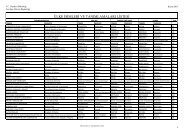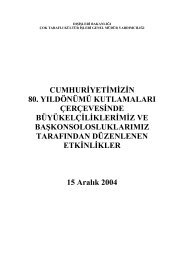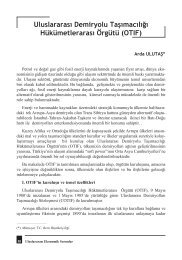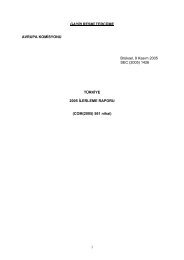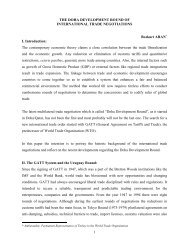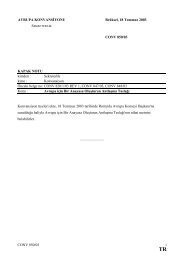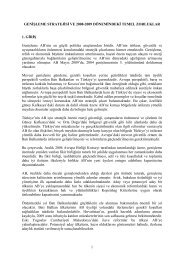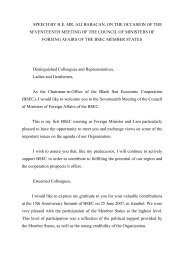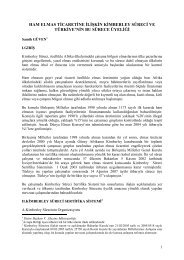ULUSLARARASI EKONOMİK SORUNLAR
ULUSLARARASI EKONOMİK SORUNLAR
ULUSLARARASI EKONOMİK SORUNLAR
Create successful ePaper yourself
Turn your PDF publications into a flip-book with our unique Google optimized e-Paper software.
N. Tolga TUNCER<br />
Turkey not only removed tariff barriers against the EU members but also committed<br />
itself to apply the common tariff rates of the Union. (common external tariff)<br />
Considering that EU has comparably very low tariff rates in industrial products, it<br />
becomes clear that Turkey does not have much to give in NAMA negotiations. Whatever<br />
will be the result of NAMA for EU, Turkey will have to apply, too. For this reason,<br />
Turkey in NAMA takes side with the EU and is treated as a developed country. As a<br />
result, Turkey demands an ambitious market opening from the developing countries<br />
and the coefficients of the swiss formula are convincingly low for them. This position<br />
totally applies to EU itself. EU, together with other developed countries, struggles with<br />
the NAMA 11 Group of developing countries which demand a very low coefficient for<br />
developed members. (a coefficient around 5)<br />
4.2.1. An Overall Assessment of NAMA Negotiations and Turkey’s Position<br />
There is no conflict of interest between Turkey and EU in NAMA Negotiations.<br />
Both are treated as developed countries and hence demand an ambitious level of market<br />
opening from developing members while trying not to go too far in opening their<br />
markets.<br />
On the other hand, looking at the overall picture, currently, NAMA Negotiations<br />
seems to be the one where we are the farthest from a deal. The NAMA 11 Group headed<br />
by India appears to have a very tough stance demanding a generous market access from<br />
developed countries while offering developed countries tariff reduction coefficient<br />
which are not acceptable by them at all. So, at the moment, if a horizontal process is<br />
launced and a ministerial meeting is hold at the end, even though there are still<br />
significant differences remain in agriculture, the most difficult question seems to be<br />
NAMA.<br />
4.3. Trade Facilitation Negotiations<br />
Trade Facilitation has been a topic that was tried to be inserted into the multilateral<br />
negotiating agenda by the developed countries for a long time. The work in Goods<br />
Council of WTO on trade facilitation goes back to Singapore Ministerial Conference in<br />
1996 but the topic was officially included in Doha Agenda with the General Council<br />
Decision of 2004 –the July Package-.<br />
In a nutshell, the trade facilitation negotiations has three pillars. The negotiations<br />
aim at clarifiying and improving the three GATT Articles: Article V on freedom of<br />
transit, Article VIII on fees and formalities related to trade and Article X on publication<br />
and administration of trade legislation. Negotiations on Article VIII and Article X of<br />
Uluslararası Ekonomik Sorunlar 29



